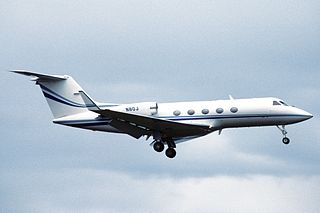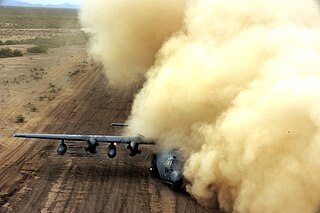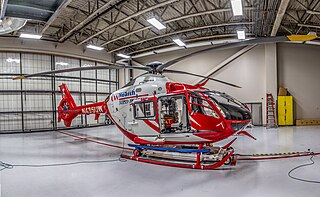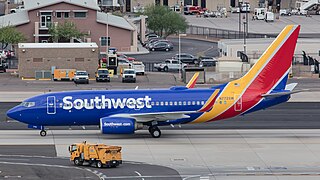Previous NTSB study
The Safety Board examined similar safety issues after the occurrence of 59 EMS accidents between May 1978 and December 1986 and concluded in a 1988 safety study 5 that many areas of EMS operations needed improvement, including weather forecasting, operations during instrument meteorological conditions (IMC), personnel training requirements, design standards, crashworthiness, and EMS operations management. As a result of its findings, the Board issued 19 safety recommendations to the U.S. Federal Aviation Administration (FAA) and others, which have since been closed (see the report appendix G information about these recommendations and their classifications).
Most of the recommendations to the FAA were closed as a result of the June 20, 1991, issuance of Advisory Circular (AC) 135-14A, "Emergency Medical Services/Helicopter (EMS/H)," which addressed equipment, training, crew resource management (CRM), decision-making, flight-following procedures, weather minimums, and the development of safety programs for EMS helicopter flights operating under 14 Code of Federal Regulations (CFR) Part 135. Although the Safety Board expressed concern at the time that the FAA chose to issue an AC instead of regulations, the number of EMS accidents was decreasing, thus the recommendations were closed. 6
Despite the guidance provided in AC 135-14A and AC 135-15, EMS aircraft accidents have continued to occur in significant numbers (as shown in table 1 from the report below) for the 15-year period from 1990 to 2005.
Table 1. EMS Accidents in the U.S. From 1990 to 2005 (source: NTSB/SIR-06/01)| | Total Injuries |
|---|
| Year | # of accidents | # of fatal accidents | Fatal | Serious | Minor |
|---|
| 1990 | 1 | 0 | 0 | 0 | 0 |
| 1991 | 1 | 1 | 4 | 0 | 0 |
| 1992 | 3 | 2 | 3 | 4 | 0 |
| 1993 | 3 | 2 | 5 | 3 | 3 |
| 1994 | 4 | 2 | 6 | 0 | 3 |
| 1995 | 5 | 1 | 3 | 0 | 2 |
| 1996 | 5 | 3 | 9 | 1 | 0 |
| 1997 | 3 | 1 | 4 | 0 | 0 |
| 1998 | 11 | 2 | 8 | 5 | 5 |
| 1999 | 6 | 0 | 0 | 6 | 0 |
| 2000 | 6 | 2 | 7 | 0 | 4 |
| 2001 | 13 | 1 | 1 | 2 | 2 |
| 2002 | 13 | 6 | 14 | 8 | 4 |
| 2003 | 19 | 3 | 3 | 2 | 16 |
| 2004 | 19 | 9 | 29 | 7 | 3 |
| 2005 | 13 | 6 | 13 | 5 | 5 |

A heliport, sometimes termed a vertiport, is a small airport suitable for use by helicopters and various types of vertical lift aircraft. Designated heliports typically contain one or more touchdown and liftoff areas and may also have limited facilities such as fuel or hangars. In some larger towns and cities, customs facilities may also be available.

Air Canada Flight 797 was an international passenger flight operating from Dallas/Fort Worth International Airport to Montréal–Dorval International Airport, with an intermediate stop at Toronto Pearson International Airport.

Blue Grass Airport is a public airport in Fayette County, Kentucky, United States, 6 miles west of downtown Lexington. Located among horse farms and situated directly across from Keeneland Race Course, Blue Grass Airport is the primary airport serving central and eastern Kentucky. More than 1.3 million passengers depart or arrive annually at Blue Grass Airport. In 2017, the airport served 1,316,847 passengers via four major airline carriers: Allegiant Air, American Airlines, Delta Air Lines, and United Airlines.

USAir Flight 405 was a regularly scheduled domestic passenger flight between LaGuardia Airport in Queens, New York City, New York, and Cleveland, Ohio. On March 22, 1992, a USAir Fokker F28, registration N485US, flying the route, crashed in poor weather in a partially inverted position in Flushing Bay, shortly after liftoff from LaGuardia. The undercarriage lifted off from the runway, but the airplane failed to gain lift, flying only several meters above the ground. The aircraft then veered off the runway and hit several obstructions before coming to rest in Flushing Bay, just beyond the end of the runway. Of the 51 people on board, 27 were killed, including the captain and a member of the cabin crew.

Sheboygan County Memorial Airport is a county-owned public-use non-towered airport located in the Town of Sheboygan Falls, three nautical miles (6 km) northwest of the City of Sheboygan, in Sheboygan County, Wisconsin, United States. It is included in the Federal Aviation Administration (FAA) National Plan of Integrated Airport Systems for 2021–2025, in which it is categorized as a regional general aviation facility. Sheboygan's National Weather Service observation station is based at the airport.
Taos Regional Airport is a public use airport eight nautical miles (15 km) northwest of the central business district of Taos, in Taos County, New Mexico, United States. It is owned by the Town of Taos. FAA's National Plan of Integrated Airport Systems for 2009–2013 classifies it as a general aviation airport.

On March 29, 2001, a chartered Gulfstream III business jet operated by Avjet from Los Angeles, California, to Aspen, Colorado, crashed into the ground while on final approach. All three crew members and 15 passengers on board perished.

In aviation, a terrain awareness and warning system (TAWS) is generally an on-board system aimed at preventing unintentional impacts with the ground, termed "controlled flight into terrain" accidents, or CFIT. The specific systems currently in use are the ground proximity warning system (GPWS) and the enhanced ground proximity warning system (EGPWS). The U.S. Federal Aviation Administration (FAA) introduced the generic term TAWS to encompass all terrain-avoidance systems that meet the relevant FAA standards, which include GPWS, EGPWS and any future system that might replace them.

The 2006 Mercy Air helicopter accident occurred on December 10, 2006, about 17:55 Pacific Standard Time, when a Bell 412SP helicopter, call sign "Mercy Air 2" impacted mountainous terrain near Hesperia, California and the Cajon Pass. The commercial helicopter pilot and two medical crew members were killed, and the helicopter was destroyed by impact forces and a postcrash fire.

In aviation, a brownout is an in-flight visibility restriction due to dust or sand in the air. In a brownout, the pilot cannot see nearby objects which provide the outside visual references necessary to control the aircraft near the ground. This can cause spatial disorientation and loss of situational awareness leading to an accident. Pilots have compared landing during brownouts to parallel parking an automobile with one's eyes closed.

UW Health Med Flight is an air ambulance service based at University of Wisconsin Hospital in Madison, Wisconsin. Med Flight was established in 1985, and now operate 3 bases in Madison, Mineral Point and Portage.

On August 8, 2009, at 11:53 a.m. (15:53 UTC), nine people died when a tour helicopter and a small private airplane collided over the Hudson River near Frank Sinatra Park in Hoboken, New Jersey, United States. The aircraft were in an area known as the "Hudson River VFR Corridor", which extends from the surface of the river to altitudes of 800 to 1,500 ft at various locations along the Hudson River in the immediate area of New York City. Within this corridor, aircraft operate under visual flight rules (VFR), under which the responsibility to see and avoid other air traffic rests with the individual pilots rather than with the air traffic controller.
Air Evac EMS, Inc., operating as Air Evac Lifeteam and sometimes called simply Air Evac, is an American helicopter emergency medical service (HEMS) or air ambulance provider headquartered in O'Fallon, Missouri. It is the largest subsidiary of Global Medical Response, though still considered an independent provider. It is also the largest membership-supported air ambulance service in the US operating helicopters from 140 bases in 15 states, mostly in the central and southern regions of the country. While primarily a HEMS provider, it also operates 2 fixed-wing aircraft in Missouri and Kentucky.

On August 9, 2010, a privately operated amphibious floatplane crashed near Aleknagik, Alaska, killing five of the nine people on board. The fatalities included former U.S. Senator Ted Stevens, while the survivors included former Administrator of NASA and then-CEO of EADS North America Sean O'Keefe, his son, and future Deputy Administrator of NASA James Morhard.
åCALSTAR is a regional air medical services company serving California and northern Nevada. It operates as a nonprofit air ambulance provider on the West Coast.

Air medical services are the use of aircraft, including both fixed-wing aircraft and helicopters to provide various kinds of medical care, especially prehospital, emergency and critical care to patients during aeromedical evacuation and rescue operations.

American Airlines Flight 383 was a scheduled passenger flight from O'Hare International Airport in Chicago, Illinois to Miami International Airport. On October 28, 2016, the Boeing 767-300ER operating the flight suffered an engine fire during takeoff. The crew aborted their takeoff, evacuating everyone on board, of whom 21 were injured. The plane was a write-off.

On March 11, 2018, a sightseeing helicopter crashed into the East River off the Upper East Side of Manhattan, New York City, killing 5 people. Two passengers died at the scene, and three others were pronounced dead at the hospital. The pilot escaped the helicopter following the crash. The aircraft was operated by Liberty Helicopters for FlyNyon. Two people were from New York state; another two were from Dallas, Texas; and the fifth was from Argentina. The pilot is from Connecticut.

Southwest Airlines Flight 1380 was a Boeing 737-700 that experienced a contained engine failure in the left CFM56-7B engine after departing from New York–LaGuardia Airport en route to Dallas Love Field on April 17, 2018. The engine cowl was broken in the failure and cowl fragments damaged the fuselage, causing explosive depressurization of the aircraft after damaging a cabin window. Other fragments caused damage to the wing. The crew carried out an emergency descent and diverted to Philadelphia International Airport. One passenger was partially ejected from the aircraft and sustained fatal injuries, while eight other passengers sustained minor injuries. The aircraft was substantially damaged.

On 4 August 2018, a de Havilland Canada DHC-2 Beaver aircraft operated by K2 Aviation crashed in poor weather near Denali, Alaska, United States. All five people on board survived the crash, but died before rescuers were able to arrive at the scene. The five people consisted of the pilot and four Polish tourists.


















